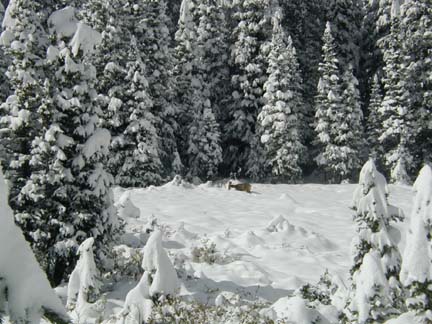Browsers glean leaves, bark, and green stems from plants, while grazers clip vegetation at or near ground level. Deer, such as this white-tailed deer in the Rocky Mountains, are browsers, a distinct advantage when grasses and other ground-level vegetation are covered by deep, wet, snow. The disadvantage of browsing is that height may make vegetation inaccessible (hence the long neck of the browsing giraffe), and often-times browsers glean parts of the vegetation that are low in nutrients, chemically defended, or both.
Grazers, such as sheep and cattle, can, when grasses are accessible, feed on the much more nutrient-rich meristematic regions of the grasses. The differentiation between browsers and grazers is one way in which ungulates (hoofed mammals) can partition food resources. Resource partitioning, in response to competition for food, ultimately allows species to exploit different diets and to co-exist without competing.
